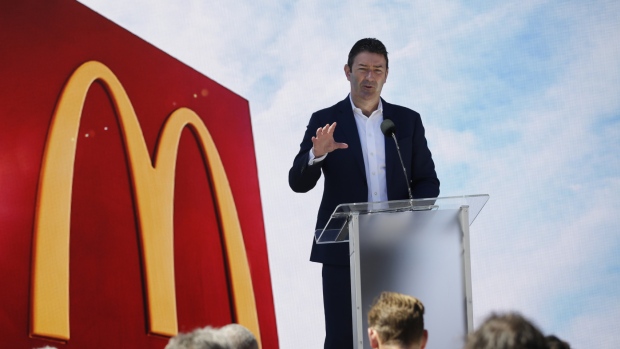Jun 12, 2018
McDonald's trims corporate fat in costs-cutting efforts
, Bloomberg News

In a move to further trim fat from its management layers, McDonald’s Corp. (MCD.N) announced at a town hall meeting on Tuesday that it will eliminate its regional structure and reduce corporate headcount.
The new plan -- part of Chief Executive Officer Steve Easterbrook’s multiyear push to streamline operations at the world’s largest restaurant chain -- will reduce its field offices, a move the company says will result in faster decision making and more support for franchisees. Levels of management will be reduced to six from eight, according to an internal company memo.
Investors have applauded the company’s move to transform itself into a leaner operation, with shares rising about 70 per cent since Easterbrook took over. But some franchisees may be skeptical of the move, since McDonald’s will ultimately be counting on fewer workers to cover more ground, according to Peter Saleh, an analyst at BTIG.
“I could see how this would be good for shareholders because you’re taking costs out of the business,” Saleh said. “But how is it good for franchisees? I’m not sure.”
Franchisees operate about 90 per cent of McDonald’s 14,000 U.S. locations. Some owners and workers have been at odds with the company recently due to more complicated menu items and different kitchen procedures, making it tough for employees to keep up with changes.
Efficiency Boost
McDonald’s downplayed on Tuesday any difficulties the changes might cause. Chris Kempczinski, president of McDonald’s in the U.S., said the shift means that franchisees will get closer to the company and new items will get on the menu faster.
Restaurant owners will get a substantial boost in support for new technology, and more time with corporate representatives, according to the company’s internal announcement.
McDonald’s didn’t disclose how many jobs it will cut or how many offices it would close. The company will report a charge of US$80 million to US$90 million in the second quarter related to severance pay and the closing of field offices, according to a statement on its website.
Saleh said the moves are part of the company’s broader push to improve efficiency.
“Is it really all that material? Not really,” he said. “It’s something, but it’s kind of more refinement and trimming around the edges versus a major shift for them.”



